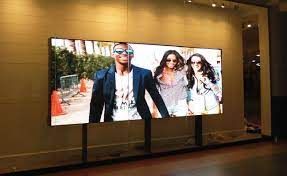In the realm of visual communication, few innovations have made as significant an impact as LED display screens. From Times Square billboards to stadium jumbotrons, these versatile panels have transformed the way information is conveyed, sightled outdoor led screens are displayed, and entertainment is experienced. Let’s delve into the evolution, technology, applications, and impact of LED display screens.
Evolution
LED (Light Emitting Diode) display screens have come a long way since their inception in the early 1960s. Initially used primarily as indicator lights, advancements in semiconductor technology paved the way for their application in larger displays. The introduction of RGB (Red, Green, Blue) LEDs enabled full-color displays, enhancing their versatility and visual appeal.
Early LED displays were limited in resolution and brightness compared to contemporary standards. However, continual advancements in LED technology, along with improvements in manufacturing processes, have led to displays with higher resolutions, increased brightness, and improved energy efficiency.
Technology
LED display screens consist of an array of individual LED modules, each containing multiple LEDs of different colors. These modules are arranged in a grid formation, with each LED serving as a pixel. By controlling the intensity of each color, the display can produce a wide spectrum of colors and shades.
Modern LED displays utilize various technologies to enhance performance and functionality. Surface-mounted device (SMD) LEDs, for instance, offer higher brightness and better color consistency compared to traditional through-hole LEDs. Additionally, innovations such as high dynamic range (HDR) and fine pixel pitch allow for superior image quality and increased viewing angles.
Furthermore, the integration of control systems and software enables seamless content management and dynamic display capabilities. This allows for real-time updates, scheduling, and synchronization across multiple displays, making LED screens ideal for dynamic advertising, live events, and interactive installations.
Applications
LED display screens find applications across a diverse range of industries and settings:
- Outdoor Advertising: LED billboards and digital signage are ubiquitous in urban landscapes, providing advertisers with dynamic and eye-catching platforms to showcase their messages.
- Indoor Displays: From retail stores and shopping malls to corporate lobbies and exhibition centers, indoor LED displays serve as effective mediums for advertising, branding, and information dissemination.
- Entertainment Venues: LED screens adorn concert stages, sports arenas, and theaters, enhancing the audience’s viewing experience with high-definition visuals and immersive effects.
- Transportation Hubs: Airports, train stations, and bus terminals utilize LED displays for wayfinding, passenger information, and advertising.
- Control Rooms: LED video walls are essential in command centers and control rooms, providing operators with real-time data visualization and monitoring capabilities.
- Education and Hospitality: LED displays are increasingly being integrated into classrooms, auditoriums, and hospitality venues, facilitating interactive learning experiences and engaging presentations.
Impact
The widespread adoption of LED display screens has had a profound impact on various aspects of society and commerce:
- Advertising Revolution: LED displays have revolutionized the advertising industry, offering advertisers dynamic, attention-grabbing platforms capable of reaching vast audiences with targeted messages.
- Enhanced Communication: Whether conveying information, delivering entertainment, or fostering engagement, LED screens serve as powerful tools for communication in public spaces and commercial environments.
- Urban Aesthetics: LED billboards and architectural lighting have become integral components of urban landscapes, contributing to the visual appeal and vibrancy of cityscapes.
- Technological Advancement: The development of LED display technology has spurred innovation in areas such as semiconductor manufacturing, optics, and software development, driving progress in related fields.
- Sustainability: Compared to traditional signage and display technologies, LED displays offer greater energy efficiency and durability, contributing to sustainability efforts and reducing environmental impact.
In conclusion, LED display screens have revolutionized visual communication, offering unparalleled versatility, performance, and impact. As technology continues to advance, we can expect further innovations that will shape the future of display technology and its myriad applications in society.


